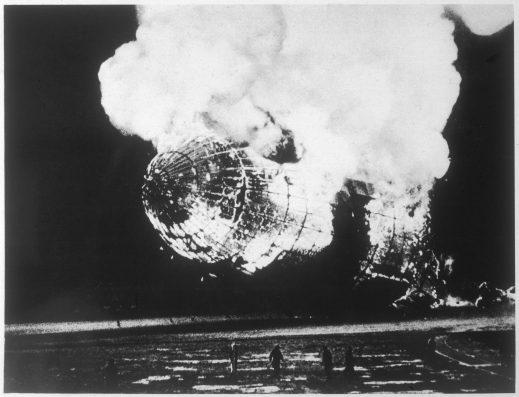The Mysterious Demise Of The Hindenburg: The Largest Airship Ever Built That Suddenly Burst Into Flames Just Before Landing In 1937

The Hindenburg was the largest airship ever built by humankind and was deeply treasured by Nazi Germany. After a three-day journey from Frankfurt, Germany, across the Atlantic Ocean to Lakehurst’s Navy Air Base in New Jersey, the aircraft prepared for landing on May 6, 1937.
Many people gathered to watch the spectacle. But disaster struck when flames suddenly burst from the aircraft just before landing, killing several people inside. It took less than a minute for it to become entirely consumed by the flames.
For decades afterward, the demise of the Hindenburg remained a mystery, and people have come up with countless theories about what could’ve happened. Before we get into what really befell the airship, let’s cover how the Hindenburg came to be.
In 1852, a Frenchman named Henri Giffard constructed the first successful airship. It was a blimp filled with hydrogen, and it had a steam-powered engine that propelled it at a speed of six miles per hour.
Later in the nineteenth century, the Germans developed a more rigid airship that could carry quite a few passengers, thanks to the work of Count Ferdinand von Zeppelin. The ship was coined as a “zeppelin” in his honor.
The German ships were made with a metal framework that protected an interior filled with hydrogen gas. As a result, they were often at risk of exploding.
In the 1930s, a rigid airship called the Graf Zeppelin offered the first commercial transatlantic flight service, which led to the creation of the Hindenburg.
The Hindenburg was 800 feet long, and on that fateful day of its fiery crash, it had been carrying 36 passengers and 61 crew members. Trips across the Atlantic were nothing new for the Hindenburg. Previously, the aircraft had traveled to Brazil 34 times. However, this passenger trip would be like none other.
While crossing the Atlantic, the Hindenburg didn’t experience anything out of the ordinary until it reached the New York area. Thunderstorms and bad weather blew in, so the captain, Max Pruss, decided to change course and wait for the storm to be over, which delayed their arrival.

Archivist – stock.adobe.com- illustrative purposes only
After the storm had passed, Pruss directed the ship back toward Lakehurst. As he attempted to moor at Lakehurst, the winds began to shift. Pruss was forced to make several sharp left turns to keep the airship’s nose straight.
When the airship was about 200 feet aboveground, it caught fire and plunged toward the earth. A total of 35 people lost their lives–13 were passengers, and 22 were crew members. The survivors suffered multiple injuries.
Shortly after the disaster, airship production ground to a halt. German and U.S. authorities conducted investigations into the explosion, and for a time, many suspected it was sabotage.
However, that theory has long been disproven. Now, the standing hypothesis is that a combination of static electricity and a highly flammable paint used to cover the canvas of hydrogen storage areas caused the airship to blow up.
Another theory was that the hard left turns the captain made might’ve loosened a cable at the back of the airship, which could’ve created sparks as it thrashed around in the air.
In the end, authorities were not able to come to a solid conclusion. We may never know for sure how the Hindenburg caught fire.
If true crime defines your free time, this is for you: join Chip Chick’s True Crime Tribe
She Walked Out Of A First Date After A Guy Berated Her For Not Wanting To Have Kids
She Got Up And Left Her Own Wedding In Tears After Her Parents Humiliated Her During Their Speech
She’s Worried That Her Preschooler Son Is Showing Psychopathic Signs
Want To Deer-Proof Your Garden? Here Are 10 Shrubs That Deer Won’t Dine On
Sign up for Chip Chick’s newsletter and get stories like this delivered to your inbox.
More About:News





